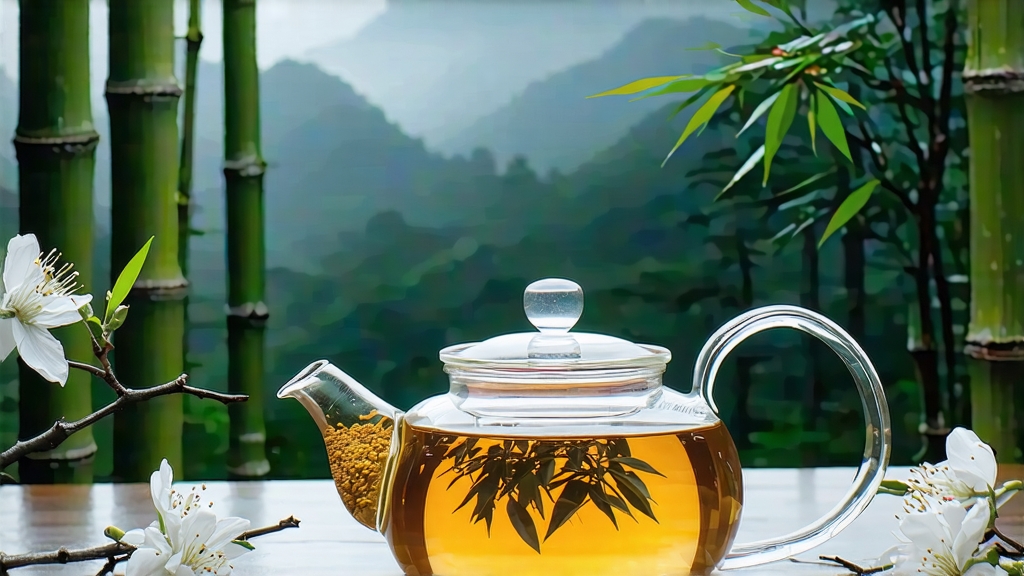
Among the six great families of Chinese tea, white tea is the least theatrical yet the most haunting: it is picked, withered, and dried—nothing more—yet in that seeming passivity it distills the cool breath of whole seasons. Within this minimalist lineage, Bai Hao Yin Zhen—“Silver Needle, White Down”—sits at the apex, the single-bud expression of a style that prizes delicacy above all else. To international drinkers accustomed to the swagger of roasted oolongs or the basso profondo of pu-erh, Yin Zhen offers a whisper that, once heard, becomes addictive.
-
Historical echoes
The first verifiable record of “white tea” appears in the Song dynasty treatise Da Guan Cha Lun (1107), but the tribute cakes described then were dark, pressed bricks whose white designation came from the light-colored leaf of certain wild cultivars. The loose, silvery buds we now call Yin Zhen emerge from the late 18th century, when the decline of compressed tribute cakes coincided with the rise of loose-leaf commerce in Fujian. Export firms in Fuzhou and Guangzhou discovered that down-covered buds, if merely sun-withered, retained a pale liquor that fetched premium prices among European apothecaries who marketed it as “white China tea for the nerves.” By 1891, Yin Zhen was sufficiently celebrated to appear at the Amsterdam International Colonial Exhibition, where Dutch tasters praised its “moonlit transparency.” The 20th century brought war and the collapse of foreign trade; gardens reverted to seed-grown trees, and the style nearly vanished. Revival began in 1963, when the Fujian provincial government re-grafted old Fuding Da Bai mother trees, laying the groundwork for the modern Silver Needle renaissance. -
Terroir and cultivar
Authentic Yin Zhen is produced in only two micro-regions: the coastal hills of Fuding and the slightly cooler interior of Zhenghe, both in northern Fujian. The soils are lateritic granite, fast-draining yet mineral-rich; the climate subtropical, moderated by the East China Sea so that winters are frost-free and spring dawns are wrapped in fog. The authorized cultivars are Fuding Da Bai and Zhenghe Da Bai—large-bud “big white” bushes selected during the Qing for their prodigious down and low polyphenol astringency. A single spring bud of Da Bai can weigh 0.5 g, three times that of an average Long Jing leaf, and is sheathed in so much trichome that it looks dipped in icing sugar. These hairs are not mere ornament: they contain abundant amino acids, especially L-theanine, which confer the tea’s signature umami-sweetness. -
The craft of “doing nothing”
Silver Needle’s processing is disarmingly simple yet brutally unforgiving. Picking window: three weeks in late March to mid-April when the bud reaches 2.5–3 cm but before the first leaf unfurls. No bud is plucked in rain or when wind exceeds 15 km h, lest the down trap excess moisture. After picking, the buds are laid in shallow bamboo trays 2 cm deep and left to wither. Traditional withering happens outside under a high March sun filtered through 50 % shade cloth; ambient humidity is 65 %, temperature 18–22 °C. Every 30 min the tea master gently lifts and rotates the trays so each bud exhales moisture evenly. At dusk the trays move indoors to continue “walking the water” for 36–48 h, during which enzymatic oxidation proceeds to roughly 5–8 %—too slight to color the leaf but enough to transmute grassy aldehydes into floral lactones. The final step is a 20-min “baking” at 40 °C using charcoal embers covered 45 cm with ash; this lowers residual moisture to 4 % without caramelizing sugars. The entire cycle is monitored by nose: when the aroma shifts from fresh cucumber to ripe honeydew with a trace of sage, the tea is done. Over-withering yields hay; under-withering traps green bitterness—mistakes that cannot be masked later. -
Grades and micro-styles
Although Chinese national standard GB/T 22291 divides Silver Needle into two grades—Special and First—connoisseurs recognize three de facto styles tied to village and